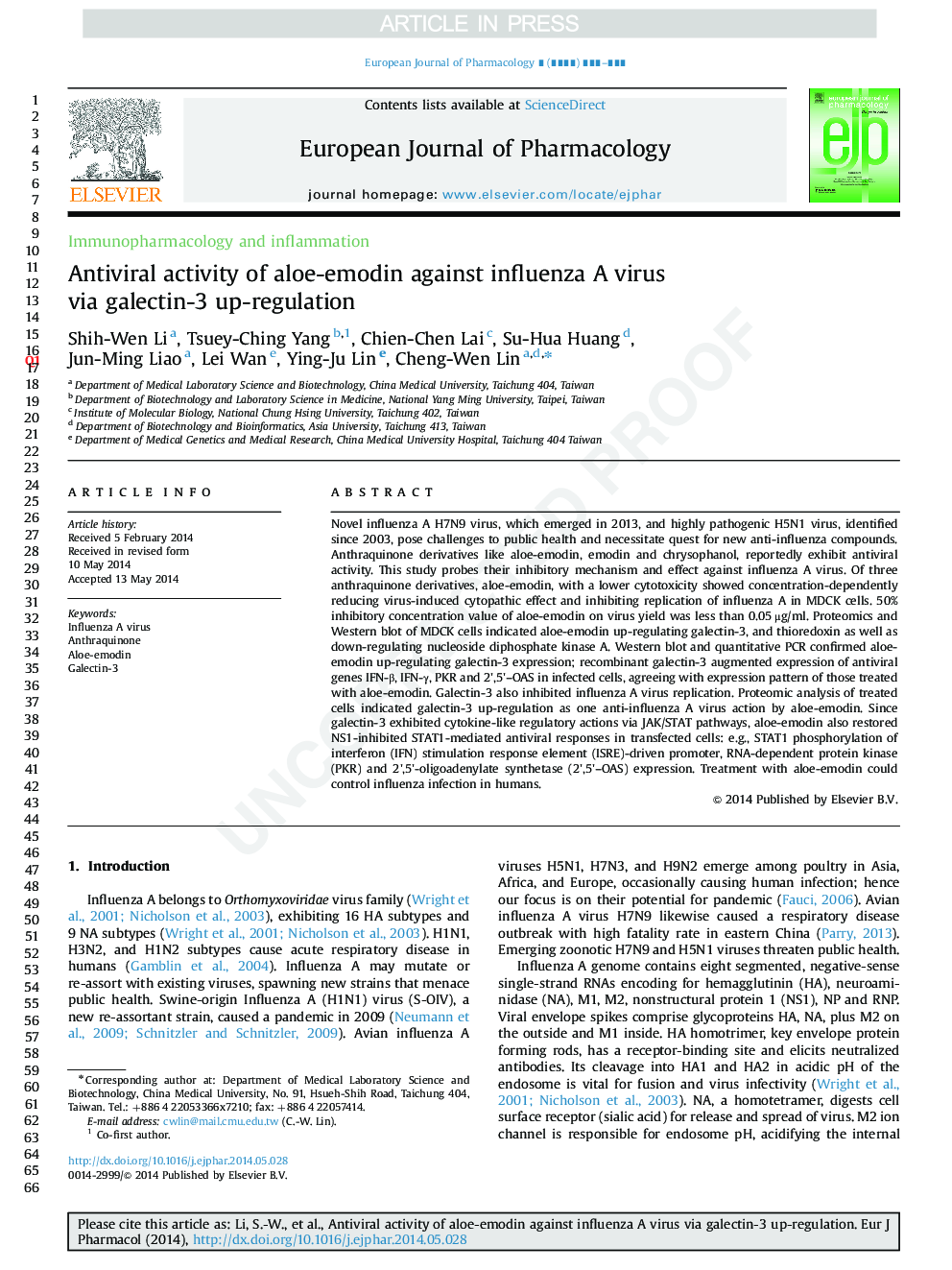| Article ID | Journal | Published Year | Pages | File Type |
|---|---|---|---|---|
| 5827966 | European Journal of Pharmacology | 2014 | 9 Pages |
Abstract
Novel influenza A H7N9 virus, which emerged in 2013, and highly pathogenic H5N1 virus, identified since 2003, pose challenges to public health and necessitate quest for new anti-influenza compounds. Anthraquinone derivatives like aloe-emodin, emodin and chrysophanol, reportedly exhibit antiviral activity. This study probes their inhibitory mechanism and effect against influenza A virus. Of three anthraquinone derivatives, aloe-emodin, with a lower cytotoxicity showed concentration-dependently reducing virus-induced cytopathic effect and inhibiting replication of influenza A in MDCK cells. 50% inhibitory concentration value of aloe-emodin on virus yield was less than 0.05 μg/ml. Proteomics and Western blot of MDCK cells indicated aloe-emodin up-regulating galectin-3, and thioredoxin as well as down-regulating nucleoside diphosphate kinase A. Western blot and quantitative PCR confirmed aloe-emodin up-regulating galectin-3 expression; recombinant galectin-3 augmented expression of antiviral genes IFN-β, IFN-γ, PKR and 2׳,5׳-OAS in infected cells, agreeing with expression pattern of those treated with aloe-emodin. Galectin-3 also inhibited influenza A virus replication. Proteomic analysis of treated cells indicated galectin-3 up-regulation as one anti-influenza A virus action by aloe-emodin. Since galectin-3 exhibited cytokine-like regulatory actions via JAK/STAT pathways, aloe-emodin also restored NS1-inhibited STAT1-mediated antiviral responses in transfected cells: e.g., STAT1 phosphorylation of interferon (IFN) stimulation response element (ISRE)-driven promoter, RNA-dependent protein kinase (PKR) and 2׳,5׳-oligoadenylate synthetase (2׳,5׳-OAS) expression. Treatment with aloe-emodin could control influenza infection in humans.
Related Topics
Life Sciences
Neuroscience
Cellular and Molecular Neuroscience
Authors
Shih-Wen Li, Tsuey-Ching Yang, Chien-Chen Lai, Su-Hua Huang, Jun-Ming Liao, Lei Wan, Ying-Ju Lin, Cheng-Wen Lin,
